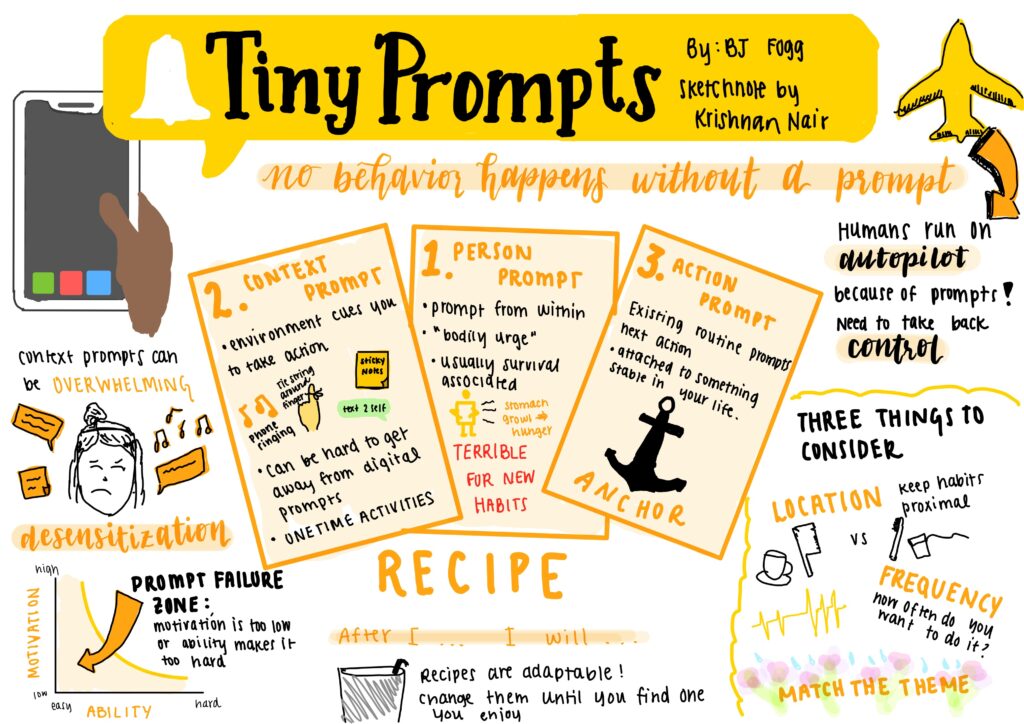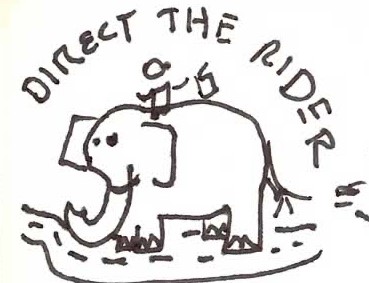Intervention Study
Idea 1: Context-Based Stretching Nudges
We follow a busy Stanford student deeply immersed in schoolwork, spending long hours at their desk with minimal movement and high screen time usage. The intervention leverages Apple Watch’s activity tracking, screen time monitoring, and haptic feedback to encourage the user to incorporate short stretching sessions into their routine. The sequence starts with the student working on their laptop for an extended period, unaware of how much time has passed. The Apple Watch detects three key inactivity patterns:
- Prolonged screen time (e.g., continuous 2-hour usage)
- Lack of movement (sitting for an extended duration)
- Stress Levels (decreased heart rate variability)
Upon reaching the threshold, the watch sends a gentle haptic tap, immediately drawing the student’s attention. Simultaneously, a simple notification appears on the screen:
“You’ve been sitting for 2 hours! Try this quick 30-second stretch to reset your focus.” The student briefly hesitates, debating whether to ignore it or take action. Eventually, they decide to follow the suggestion, standing up to perform a short, easy-to-follow stretch—such as a neck roll or seated spinal twist. After stretching, the Apple Watch automatically logs the activity and provides a quick self-report prompt:
“Did this stretch help? ✔ Yes / ❌ Not really.”
This cycle repeats over time, reinforcing habit formation through real-time nudging, screen time awareness, stress monitoring, and habit-tracking incentives.
Pros:
- The combination of screen time/stress monitoring and movement tracking ensures nudges occur when the user truly needs them rather than at arbitrary intervals.
- Unlike generic reminders, this approach directly ties stretching to screen overuse and inactivity, helping combat digital eye strain and posture fatigue.
- The haptic buzz grabs attention gently, while the notification provides an actionable next step, reducing friction in habit formation.
- This intervention isn’t just time-based but data-driven, ensuring students only receive nudges when necessary, reducing notification fatigue.
Cons:
- This intervention excludes students who don’t own an Apple Watch, limiting participation and scalability.
- Despite the personalized approach, some users may disable reminders if they feel overwhelmed by alerts from other apps.
- Unlike social nudges, this intervention relies solely on individual motivation, which may not work for users who need external accountability (e.g., stretching with a friend).
- The intervention suggests stretches generically rather than allowing users to choose stretches that fit their needs (e.g., relaxation vs. energy-boosting movements).
Idea 2: Personalized Stretching Notifications
In this story board, we have a user who constantly prioritizes schoolwork and does not take stretch breaks in between. In this storyboard, it is assumed that the user has the STRETCH app installed to their phone but has not opened it before, hence does not have a profile created. In the first few scenes, the user is working at their desk when they get prompted by a notification from the STRETCH app to set up their stretching profile. This implies that once a user sets up a profile, they will get personalized reminders and stretching routines to fit their needs. The user creates their profile such that they pick the days they want to routinely stretch, as well as the intention (how they want to feel based on the stretches they complete), and lastly the time that they want to be reminded to stretch. When Tuesday comes by (one of the days selected as their stretch preference), they get a reminder at 3:00PM, prompting them to follow along the stretch routine which can be done anywhere. In the end, the user feels reenergized and is able to go back to doing their work, fully able to concentrate too.
Pros
- By allowing users to choose their preferred stretch times and intentions, the intervention increases the likelihood of adherence. Users feel more in control of their routine.
- Regular reminders at scheduled times help users develop a habit of stretching, reinforcing long-term behavioral change.
- Stretching boosts blood flow, reduces tension, and can enhance focus, helping users be more productive after breaks.
- The exercises recommended by the app are low barrier entry, meaning it makes stretching easy to do anywhere, so this intervention is accessible for busy students without requiring additional equipment.
- Giving users options to choose their “intention” (e.g., relax vs. re-energize) helps tailor the stretching experience to their specific needs, making it more relevant and effective.
Cons
- Users who receive too many reminders (from multiple apps like social media apps) may ignore or disable them (DND mode), reducing intervention effectiveness.
- Unlike social interventions (aka stretch breaks with friends), this is an individual-based intervention, which may lead some users to dismiss the reminders and not engage.
- Some users may prefer spontaneous movement breaks instead of scheduled reminders, making rigid time-based notifications less effective for them.
- Requiring users to set up a profile before they get reminders might create a barrier to entry, leading some to abandon the app before experiencing its benefits.
Idea 3: Social Stretching
This intervention is designed to help individuals build a daily stretching habit by leveraging social accountability, smart timing, and interactive engagement. Users set personalized stretching goals, connect with friends, and sync their calendars to receive smart notifications when they and their peers have free time for a quick stretch. The app sends real-time stretch check-ins, encouraging users to post a photo or video of themselves stretching while friends react and comment, reinforcing engagement. A leaderboard and streak system adds friendly motivation, while calendar-based group stretch scheduling ensures reminders are sent at optimal times. At the end of each day, users receive a simple reflection prompt to track their progress and experience, reinforcing habit formation. Over time, this intervention helps users stretch more consistently, feel more motivated, and experience physical and mental benefits.
Pros:
- Leverages Social Accountability – Encourages participation through peer influence, increasing motivation.
- Smart Timing for Stretch Breaks – Uses calendar integration to suggest optimal moments for stretching.
- Engaging & Fun – BeReal-style check-ins, streaks, and leaderboards make stretching more interactive.
- Minimal Effort for Users – No complex tracking; simple check-ins and passive notifications drive behavior.
- Encourages Consistency – Streaks and daily reminders help reinforce habit formation.
- Flexible & Customizable – Users can control reminders, group settings, and participation levels.
- Positive Reinforcement – Focuses on progress and social support rather than pressure or competition.
Cons:
- Requires Social Buy-In – Effectiveness depends on user engagement and willingness to participate.
- Potential Notification Fatigue – Too many reminders or check-ins could lead to annoyance and app fatigue.
- Not Ideal for Solo Users – People without an engaged social circle may find it less effective.
- Privacy Concerns – Users may be hesitant to share stretch check-ins or sync their calendars.
- Dependent on Calendar Accuracy – Smart scheduling only works if users keep their calendars updated.
- Habit Reliance on App – Users might develop the habit only within the app environment, making long-term self-sufficiency uncertain.
Our Intervention Study
We were captivated by the question: are social-based incentives strong enough to help students build a consistent stretching habit? Throughout our baseline study, we learned that extrinsic motivators are awesome initiators of habits, but their ability to promote consistency over a long period of time remains unclear. We would love to understand this further, and thus, we decided to pursue idea 3: Social Stretching.
To conduct this study, we will add our study participants to a Slack group with us and all study participants. They will be required to turn notifications on for this Slack group for the duration of the study. Everyone on our team will send a photo of themselves stretching once they stretch for the day in the Slack group, serving as a reminder to our participants to stretch. Since our reminders will be sent at various times as they are dependent upon our schedules and preferences, we are hoping that this will in fact cater to our participants’ diverse schedules and notification preferences as well. When we send our photos, we will also attach this quick google form with the following questions:
- Where are you/what are you doing?
- How do you feel?
- How much more motivated did you feel to stretch after seeing the leaderboard? Answer on a scale from 1-10 where:
- 1 means there was a strong negative effect
- 5 means there was no effect
- 10 means there was a strong positive effect
We are interested in the effectiveness of these social-based reminders on our participants’ motivation to stretch (3), so we ask (1) and (2) to understand if the effectiveness was impacted and how so. We are also interested in their immediate reactions, and considering that this form will be sent at most 4 times a day, we have made these questions short and sweet to facilitate quick and easy response times.
At the end of the day, we will send our study participants the leaderboard for the day based on how consistently everyone is stretching. We will attach this other google form at this time asking them to answer the following questions before they finish their day:
- Did you stretch today?
- Why or why not?
- How much more motivated did you feel to stretch after seeing the leaderboard? Answer on a scale from 1-10 where:
- 1 means there was a strong negative effect
- 5 means there was no effect
- 10 means there was a strong positive effect
With this, we are more concerned with their overall reflections (2) as opposed to their immediate reactions. We want them to sit with the feelings that all the messages have evoked for them and how these messages affected their behavior throughout the day. Still, we keep it quick to avoid burning our participants out from all of the data we are collecting from them throughout the study.
As reflected by the questions in our post-study interview script/form, we will use our post-study interviews to understand their experiences throughout the study in more depth/detail.
Intervention Study Materials
The following materials (excluding google forms as they contain sensitive material) can all be found inside of this google drive folder.
- Introduction Email
- Intervention Study Screener
- Pre-Study Interview Script to be conducted for new participants
- Introduction Document
- Intervention Study – Reactions
- Intervention Study – Reflections
- Post-Study Interview Script for participants that are available for a post-study interview
- Post-Study Interview Form for participants that are not available for a post-study interview








Comments
Comments are closed.